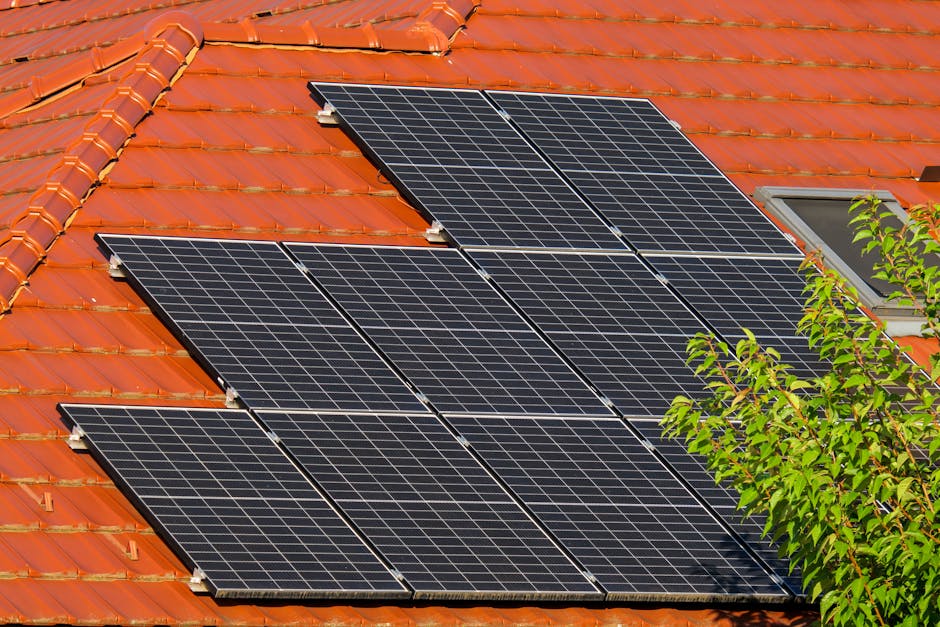Innovations Leading the Charge Toward Sustainability
Addressing the environmental challenges of our time requires ingenuity and commitment, sparking a global surge in sustainable innovations. From renewable energy breakthroughs to advancements in waste reduction and green construction, technology and creativity are reshaping how industries and individuals approach sustainability. These innovations aren't just conceptual, they're being implemented across sectors, driving significant environmental progress while meeting the demands of a growing, environmentally conscious population.

1. Renewable Energy Revolution
Renewable energy stands as a cornerstone of sustainability efforts worldwide. Over the past decade, solar and wind energy have experienced exponential growth due to falling costs and technological improvements. According to the International Renewable Energy Agency (IRENA), the cost of solar photovoltaic (PV) electricity has decreased by 82% since 2010, making it one of the most affordable energy sources today. Wind power, both onshore and offshore, has also seen dramatic advancements in efficiency and implementation.
One standout innovation is the development of floating solar farms. These installations, placed on reservoirs or other bodies of water, maximize land use while reducing water evaporation. For instance, China’s 40-megawatt floating solar farm in Huainan represents how large-scale projects are transforming global energy landscapes. Similarly, advancements in battery storage systems are overcoming intermittent energy supply issues associated with renewables, ensuring consistent power availability.
Another pivotal breakthrough is green hydrogen technology. Produced using renewable electricity to split water into hydrogen and oxygen, green hydrogen offers a clean alternative for industries like transportation and manufacturing that rely heavily on fossil fuels.
2. Sustainable Agriculture and Food Systems
The agricultural sector contributes significantly to greenhouse gas emissions, prompting innovations aimed at reducing its environmental footprint. Vertical farming has emerged as an efficient solution to urban food production challenges. By growing crops in stacked layers within controlled environments, vertical farms use up to 95% less water than traditional methods while eliminating the need for pesticides.
Precision agriculture is another game-changer. Using technologies such as GPS mapping, drones, and IoT sensors, farmers can optimize resource usage (applying water, fertilizers, and pesticides only where necessary) to enhance crop yield while reducing waste.
Alternative proteins are also reshaping food systems. Plant-based meat alternatives like those developed by Beyond Meat and Impossible Foods are gaining traction among consumers looking for environmentally friendly dietary options. Additionally, lab-grown meat promises to deliver traditional meat products without the ethical or environmental concerns associated with livestock farming.
3. Waste Management Innovations
Tackling waste is crucial for sustainability, especially with global waste generation projected to increase by 70% by 2050 according to the World Bank. Innovations in recycling technologies are transforming how materials are repurposed. For example:
- Advanced chemical recycling processes break down plastics into their original components for reuse.
- AI-driven sorting systems enhance recycling accuracy by identifying different material types more efficiently than traditional methods.
- Biodegradable alternatives to single-use plastics are being developed from materials like algae and cornstarch.
Circular economy principles are also gaining momentum, focusing on designing products that can be reused or recycled entirely at the end of their lifecycle. This shift reduces reliance on virgin resources while minimizing waste production.
4. Green Construction Practices
The construction industry accounts for approximately 38% of global carbon emissions when considering both operational and embodied carbon, according to the Global Alliance for Buildings and Construction (GlobalABC). To address this impact, eco-friendly building materials such as cross-laminated timber (CLT) are replacing traditional steel and concrete structures. CLT not only sequesters carbon but also provides durable and versatile construction solutions.
Energy-efficient building designs incorporating smart systems for heating, cooling, and lighting further reduce resource consumption during a building's operational phase. Passive house standards (design principles focused on maximizing energy efficiency) are becoming more prevalent globally as awareness grows around sustainable architecture.
An innovative example comes from Singapore’s Marina One development, a mixed-use complex featuring extensive greenery integrated into its design to improve air quality and reduce urban heat island effects.
5. Transportation Electrification
The transportation sector remains one of the largest contributors to global emissions but is undergoing rapid transformation through electrification. Electric vehicles (EVs) are leading this shift thanks to declining battery costs and expanded charging infrastructure networks worldwide.
Public transit systems are also adopting greener alternatives such as electric buses powered by renewable energy sources or hydrogen fuel cells. For instance, Shenzhen in China became the first city globally to transition its entire fleet of public buses (over 16,000 vehicles) to electric power back in 2017.
Additionally, micromobility solutions like e-scooters and e-bikes offer low-emission alternatives for short-distance travel within cities while reducing congestion levels significantly.
6. Digital Technologies Driving Sustainability
Emerging digital technologies play an increasingly vital role in advancing sustainability initiatives across industries. Artificial intelligence (AI) models analyze vast datasets to identify patterns that inform better decision-making related to energy consumption or resource allocation within supply chains.
Blockchain technology enhances transparency across supply chains by providing immutable records that verify ethical sourcing practices or environmental compliance standards, a critical factor for consumer trust today. The Internet of Things (IoT) enables smart devices capable of monitoring real-time resource usage within homes or workplaces (for example automatically adjusting lighting based on occupancy levels) resulting in reduced electricity consumption overall.
Sustainability isn’t solely reliant on corporate or governmental actions; grassroots movements play an equally important role in fostering change at local levels worldwide too! Community-driven initiatives like urban gardens promote self-sufficiency while enhancing neighborhood resilience against economic disruptions caused by climate change-related events (e.g., floods/droughts).
Citizen science projects engage individuals directly with data collection efforts surrounding biodiversity loss trends nearby ecosystems encouraging stronger connections between humans/nature alike!
This article was generated by AI